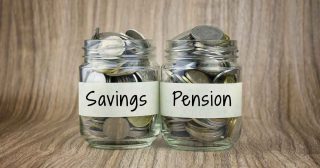
Not retiring: The pension savings conundrum
There has been a lot of talk about how to fund people living longer lives which has...read more
Anaesthetist Seema Charters talks about her experience of Long Covid and how important it is for employers to understand the impact on sufferers.

Seema Charters is an NHS anaesthetist at a Warrington hospital. Last June, she was prepping a patient who had tested negative for Covid for surgery. The following day the patient tested positive, however.
Ten days later Seema developed symptoms of Covid and her condition got progressively worse. Her temperature was going up and down and didn’t respond to paracetamol and her breathing became more and more rapid. She was advised to go to hospital.
 As she was waiting on her own in A & E her breathing suddenly deteriorated. “I could not draw a single breath,” she says. “I thought that was it.” Fortunately, she was given oxygen and her breathing stabilised. She spent around three days in the intensive care unit and was then moved to a ward. Seema had worked in the hospital on the Wirral as a trainee and knew some of the staff. She says: “It was a very humbling experience. The nurses were very supportive. As an anaesthetist you don’t tend to work on the wards.”
As she was waiting on her own in A & E her breathing suddenly deteriorated. “I could not draw a single breath,” she says. “I thought that was it.” Fortunately, she was given oxygen and her breathing stabilised. She spent around three days in the intensive care unit and was then moved to a ward. Seema had worked in the hospital on the Wirral as a trainee and knew some of the staff. She says: “It was a very humbling experience. The nurses were very supportive. As an anaesthetist you don’t tend to work on the wards.”
She was discharged after 12 days. “I felt lucky to be alive and grateful to have been saved,” she says.
But her ordeal was not yet over. Seema felt very weak. She found it too tiring even to go up and down the stairs at home and was confined to her bedroom. When she bent down to pick something up she felt light-headed.
Gradually, she realised that what she was experiencing was not just the result of having been seriously ill in hospital. A colleague’s husband who had had Covid was still feeling breathless after two months too, although he didn’t have the same symptoms as Seema.
Her symptoms varied from exhaustion and dizziness to stomach bloating, insomnia and a constant burning sensation in her throat. Her GP put her on heartburn pills, unable to piece together all the different symptoms she was experiencing.
Seema started reading blogs and articles about Long Covid-type symptoms, trying to diagnose herself. More information was emerging about the condition and support groups such as Body Politic were linking up sufferers.
By October, Seema started communicating with her manager about returning to work. She decided a date, but then she began to experience sudden chest pain, known as costochondritis, which she treated with painkillers. The pain delayed her return until mid-November. On her first day back in theatre she was meant to do a half day observing others, but after an hour and a half she suddenly crashed. Her throat started to burn and she was exhausted. Just driving to work and talking to people had worn her out. “I came home and cried,” she says. “People thought I was having another Covid attack. I realised that my colleagues didn’t understand what was happening because no-one had really heard about Long Covid.”
So she decided to talk about her experience and about Long Covid, doing a presentation to her trust in November. Several colleagues who had been suffering came forward as a result and Seema was able to point them towards resources. She herself wrote up information for her trust on the condition and where to find help.
Seema says employers, even in health, did not know what to do at that time. Occupational Health had, for instance, suggested a phased return over six weeks. It was not nearly long enough for Long Covid. Seema’s manager agreed to build up her hours slowly, trusting her to know how to pace herself, although she was only learning that as she went along. “You can’t predict when you will crash at first,” she says.
After around 12 weeks she was back to full-time hours, but she no longer works occasional weekends and she goes to bed very early to conserve her energy. She does yoga and uses an exercise bike. At first she was advised to build her exercise gradually by a physiotherapist, but Long Covid has periods of relapse and remission so it is not so straightforward.
Over a year later, things are easier, says Seema, who is 58, but she does not feel that she is back to normal at all and still needs to pace herself.
The reason things are easier is because there is more information and knowledge about Long Covid, in large part thanks to people like Seema who are talking about their experiences. “I have given several talks on Long Covid,” she says. “I feel it is my duty. It is hard for people to understand what it is like. You don’t want people to think you are a slacker. They can’t see externally that anything is wrong. But I have never taken sick leave before. It’s important that employers believe that it is real and that if those who have it say they are tired that you trust them.”